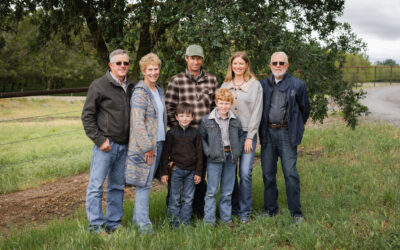
Think about it
It was a genuine question we got from family and friends—after rounds of congratulations and surprise—when they learned we were adding to our family of seven.
Those closest to us know we bought somewhat of a “fixer-upper” when we moved to Nebraska. It’s a traditional old farmhouse that we fell in love with for the “good bones” and good location.
When we walked out of the kitchen with false ceilings, fake brick backsplash and 1980s carpet, I think the realtor was surprised to hear, “We want to make an offer.”

Can any of you relate? Many you’ve bought or otherwise taken ownership of a “fixer-upper.” Maybe it wasn’t love at first sight, but you saw the potential and had a few ideas going in.
Progress seems slow, as everything takes cash. As we look to add on more space, it emphasizes what I already knew: When it comes to home improvements, you can’t make quick progress without a large investment.
In the cattle business, there are lots of things that would fall into that category (adding feed bunks, expanding acreage, etc.), but not everything that increases profit takes a bank loan or dipping into reserves.
Think about genetic selection and bull power. You’re going to invest in something to keep the calves coming each year, but the same money can fall short or supercharge progress in traits like carcass quality and feed efficiency. The difference mostly comes down to an outlay of a free resource: brain power.

I suppose I’ve always known this. Pulling up to a ranch visit, I make no correlation between condition of outbuildings and expectations for the herd I’m about to see. A brand new pickup does not mean anything in terms of cattle genetics.
But it became crystal clear this spring as I visited with a cattleman who had two and half times more premium Choice qualifying cattle in just three years’ time after taking over the family herd. Primes went from zero to 35% of the steer crop.
“We did this all with $13 straws of semen,” he told me. Later the rancher remarked on his bargain-priced, used squeeze chute and how the heifer development pens also double for growing steers.
The biggest expenditure came in the form of study. Researching the traits of value, consulting sire catalogs, visiting with those who had made the kind of progress he wanted to achieve.

Improvement does not necessitate across-the-board increases in spending; you may just have to schedule some time to study.
Brain power could be your most valuable resource.
May your bottom line be filled with black ink,
Miranda
You may also like
Legacy in the Golden Land
On a quiet stretch of Northern California rangeland, a different story unfolds. The Borror family’s legacy modestly speaks through the cattle they raise, the ground they steward. The generations who’ve made a life here demonstrate commitment to doing things right, even when no one is watching.
Marbling, Feet and Fertility: Are they related?
The Angus breed has enough genetic diversity to allow breeders, and their commercial bull customers, to make progress across multiple traits simultaneously. One bloodline may be high in marbling but does not check the boxes you need for other traits. That does not mean marbling is the cause—it simply means your search for the ideal genetic pairing is not done.
Working for Premiums
The commercial Angus rancher from Collyer, Kansas, came back for daily homework in 1999 after a year at college. For 25 years now, he’s studied all the ways to grow his family’s W6 Cattle cow-calf herd with Angus at the base. Guided by data, Walt worked to improve the herd from zero Primes to averaging 60 percent. Learning what drives premiums prompted improvement.



